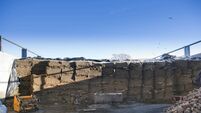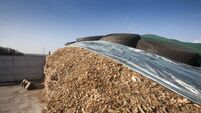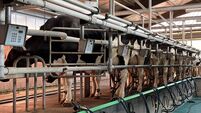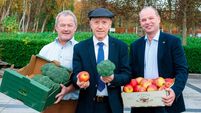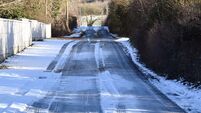Brian Reidy: An early dry-off due to underfeeding in the coming months makes no sense

With the current milk price, there is far too much emphasis on managing grass and not enough emphasis on managing the cow. Picture: iStock
Late August and early September have been very favourable weather-wise. Ground has dried very well after all the rain we had in July and grass growth has been excellent recently. Many actually reported growth rates in the high 60s last week which is massive for September.
At this point, there is very little silage to be made. Any third cuts were made over the last few weeks. Some will still be tight on silage stocks and now that all of the silage is in, you should start to plan which cuts go to what groups, or if you need additional supplies.
Those with autumn calvers and/or higher-performing herds may also be waiting on beet and maize harvests to complete their feed supply.
Can I justify feeding cows this autumn with the current milk price? This is a very common question on farms and over the phone at present. Can you afford not to feed her? Feeding her when she is dry is not free so an early dry-off due to underfeeding in the coming months makes no sense.
If a cow ends up being dry for 30 days longer than she should be, it will cost €75 to feed her on silage alone for that month. At approximately €400 per tonne for dairy nuts at present, that €75 would buy you just under 190Kg. Feed at 2kg extra per day for the next 90+ days and sell more milk is far better use of that €75 in my book.
At this time of year and especially this year with the current milk price, there is far too much emphasis on managing grass and not enough emphasis on managing the cow.
Over the last few weeks, even during the good spell of weather, many herds have benefited from the introduction of good quality forage to complement grazing. Autumn grass is inherently low in dry matter and once we get into September it is very difficult to maintain intakes capable of holding milk yields.
This very much holds true when growths are very good which will mean grass dry matters are even lower. For the cows it’s down to increased intakes, maintaining body condition and keeping yields and solids up.
Driving intakes will drive performance and if cows are dropping off in yield and solids then they are not getting fed enough. It’s a simple mathematical equation, energy in means energy out.
Why is it acceptable for cows to freewheel to dry off while milking much less than they are capable of? Fixed costs per cow remain the same so why not dilute them?
With this in mind, milk solid and milk yield along with grass supply, silage/forage quality and body condition should determine the nutrition management required at this time of year. This should involve a cost-effective balanced diet that supplies ingredients which are deficient in autumn grass.
It should have a high energy content, and effective fibre to provide structure in the rumen and the aim must be to complement the grass available. Maintaining performance and an appropriate body condition must be the focus.
With most autumn calving at an advanced stage, it is now very important to focus on the feeding of the fresh calvers and to monitor performance carefully.
Fresh cows really should be kept indoors by night at this stage to make sure that the correct dry matter intakes are being achieved. They really have no business out by night as overall intakes will not be acceptable to support the fresh cows' genetic potential.
This will make it easier to monitor intake and performance. Fresh cows on an appropriate feeding regime before full-time winter housing will find the transition to full indoor feeding much easier and get to optimum production quicker.
These fresh calvers need to be getting up to 75% of their Dry Matter indoors if at grass by day currently. Obviously, if grazing conditions become more difficult then you really must keep cows indoors at night at a minimum to get the required feed intakes. This strategy will certainly have a positive influence on fertility performance in this group of cows later in the year.
Autumn-calving dairy cows will always benefit from their owners taking control of the pre-calving diet. Low-energy diets with sufficient protein encourage intakes post-calving, improve colostrum quality and reduce the incidence of metabolic disorders.
This involves minimising lush grazing, incorporating plenty of long fibre, some quality concentrates and a top-quality mineral supplementation programme. Getting cows off grass pre-calving in the autumn is the cornerstone of a successful lactation.
As is the norm when we head into the autumn, milk solid percentages take a jump, this is due to a drop off in volume. What we really must focus on more is the kgs of milk solids produced.
Cows that were well fed during the dry spell in May, June and the wet July to maintain milk yield in those periods are still milking very well. Lactation persistency looks to be excellent this year in these herds and as a result high fat and protein percentages are now returning very good Kgs of milk solids sold per cow in milk.
There are still 100% spring calving herds doing 2.3-2.4 kgs of solids per day. These producers continue to see that their herd is capable of much more when intakes are maintained cost-effectively with complementary feeding. The cow is the best monitor of her own performance and is constantly giving feedback regarding how she is being fed and managed.
The energy in a cow’s diet will drive protein production and today's protein reflects the energy status of the herd seven to 10 days ago while fibre digestion drives butter fat and the fat in the milk today reflects fibre digestion over the previous two to three days.
If butter fats are jumping up and down at present then it indicates that intakes of dry matter each day are variable and as a result fibre digestion rates will also fluctuate. Fibre digestion drives butter fat. The introduction of a buffer will stabilise intakes and keep butter fats up.
Increasing the protein content of a diet will increase/promote more intake but is not directly influencing milk protein. Those using heat and health monitoring systems will have an excellent handle on intake and rumination fluctuations and can act before the tank is adversely affected.
Lactose percentage has become a more common topic in conversations with customers over the last few years. Lactose in milk will always drop at this time of year, for two reasons in particular.
As cows enter late lactation the Lactose content of their milk will always reduce (obviously the introduction of fresh cows to the tank will push lactose back up)
The sugar content of grazed grass is lower at this time of year due to less sunshine hours, lactose is a sugar so less sugar in means less sugars out in the milk. You can influence lactose by increasing the sugar/energy content of the diet.
Milk Ureas should also be monitored to see if cows are being over- or under-supplied with protein/nitrogen or not getting enough energy to process the protein consumed.


